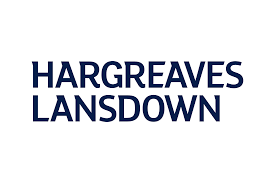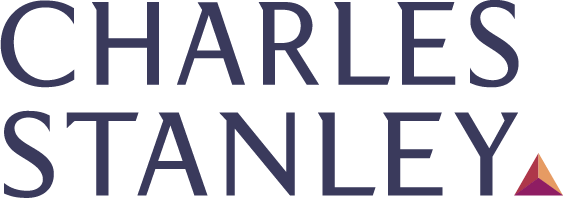For many, retirement is one of life’s great goals. It’s the end of an era and the start of a new one and can open a wealth of new opportunities. For some, retirement will be spent relaxing after a lifetime of work. For others, it’s one of the busiest times of life!
When retirement beckons, you’ll need the wealth to support yourself, your partner and your family throughout a period which could last more than 30 years.
Maximise your retirement fund with our panel of pension providers. Click on your chosen provider to get started!
How long is the average retirement?
The average retirement duration is around 20 years. According to Aviva, a 65-year-old male retiree will likely live until they’re about 84, whereas a woman will live until 86. A 65-year-old man has a 9% chance of reaching 100; a woman has a 14% chance.
If you retire in your early 60s and live until you’re 100, then you’ll need a significant retirement pot. To put this into perspective, to match the spending power of £100 in 2001 would cost £169.66 in 2021. This equates to inflation of 2.68% per annum and a cumulative increase of 69.66%. Consequently, it is crucial to plan your retirement well in advance of your retirement date.
A long life requires considerable financial planning, and thus, more and more older people are growing anxious about their retirement.
One of the big questions is, where do you put your money after retirement, and how do you manage it?
Thinking ahead for retirement
There comes a point where we start to think more seriously about our retirement.
The steady income we get used to when younger and middle-aged is something we start to take for granted. However, any bumps in the road - whether it’s your car breaking down or boiler needing servicing - can often be ironed out and absorbed by future salary payments.
That changes when we retire, and budgeting and planning become more important. Part of the issue is that many of us simply don’t know:
- How long we’ll live
- How much we’ll spend during retirement
Coming up with a fixed monthly expenditure estimate may not cut the mustard, as you might want to splash some cash in your early retirement. For example, you may have plans to spend part of your lump sum on home improvements, a holiday, or buying a new car. This is before hunkering down for your late 70s, 80s and beyond.
That said, planning a rough monthly budget based on your average expenditure in your early 60s is wise. But, first, you’ll need to work out how much money you have and how much you’ll receive from your pensions, both state and private.
The Retirement Living Standards website has created a fascinating summary of the cost of different lifestyles in retirement. This research found that a single retiree will require a minimum income of £10,200 a year. This would cover traditional living expenses with "some leftover for fun". The equivalent lifestyle for a couple would require an income of £15,700 per annum. Of course, this is before the dreaded inflation in future years.
Hunting down your pensions
It is vital to retain documentation covering any pension plans you may have taken out over the years. This may include both workplace pensions and private pensions. Assuming they have up-to-date details, the administrators of your pensions should contact you on an annual basis with an update on your pension pot. As you approach retirement, you should also be made aware of the various options available to you.
If you’re lost or confused whilst tracking down your pensions, you can use the government’s Pension Tracing service to help.
Withdrawing your pensions
Typically, when reaching retirement age, there are several mix-and-match options to consider:
- Tax-free lump sum (typically 25% of your pension pot)
- Purchase an annuity to create a long-term stable income stream
- Use the drawdown option, taking an income from your pension each month
- Under drawdown, you can make withdrawals at your discretion
There are specific rules for “small pension funds” of up to £10,000. In this scenario, you may be able to cash in your pension, although an element would likely be classed as taxable income. In this scenario, it is vital to take professional advice.
One of the main points of differentiation between these options is tax. Taking your pot as a lump sum may seem attractive if you want to invest or even just spend it, but you could be taxed heavily. Which? has a great guide on how and when to take your pension pot as a lump sum.
We will now look at pension pot options available in more detail.
Your pension pot options
As mentioned, there are multiple methods for drawing money from your pension pot. People living in the UK have greater rights over their pension assets than ever before, and you’re able to withdraw the entire fund as a lump sum at any point if you wish.
The at-a-glance options are:
- Leave your pension pot untouched until you need it later on in life. For example, you may only partially retire or switch to a part-time job, etc., meaning you don’t need to touch your pension pot. There are several considerations to make, best summed up by Money Advice Service.
- Take a tax-free lump sum. Upon retirement, you can withdraw 25% of your pension as a tax-free lump sum. These funds can be used to pay off your debts, mortgages, fund holidays, or simply add to your savings. Any additional withdrawals above the 25% lump sum limit will be treated as income for tax purposes.
- Convert your pension to an annuity. An annuity can provide a guaranteed income for life or a guaranteed period. The income level will often increase in line with inflation, which protects your relative spending power in the future. Large pension pots can be used to buy attractive investment-based annuities, but there’s always some level of risk attached. Age UK has an excellent guide on annuities here.
- Income drawdown scheme. Income drawdown allows you to withdraw money regularly, akin to a monthly salary, but this isn’t guaranteed for life. Above and beyond the 25% tax-free lump-sum payment, all withdrawals will be treated as income and taxed accordingly. This option is heavily dependent on how you invest the surplus capital. Money Advice Service has a good resource on income drawdown schemes here.
- Take cash sums from your pot, or take the entire lump sum. A simple way to use your pension pot is by withdrawing cash sums when you need them, which is similar to a drawdown. The first 25% is tax-free, but you’ll be taxed beyond that. Like taking your full pot as a lump sum, there are tax issues to consider when choosing this method. Money Advice Service has a guide here.
The exact nature of your options will differ between providers but mixing and matching different options is also possible. For example, you can invest in a private pension with a drawdown, but you will still have the opportunity of acquiring an annuity at any point in the future.
On occasion, you may feel the need to switch your pension provider. Under new pension industry regulations, you have more options over workplace and private pensions than ever before. If you have any issues, questions or queries, it is crucial to take advice.
You can check resources on the MoneyHelper website. On a no advice basis, they can put you in contact with regulated and suitable financial advisers.
Maintaining the real spending power of your pension assets
The average UK inflation rate currently stands at around 3% per year. This means that in relative terms, you need to increase your investments by 3% per annum to maintain your spending power. For example, after considering inflation (used as a measure of the cost of living), £100 in 1956 would be worth £2,135 now - quite remarkable.
The following summary of the cost of bread perfectly demonstrates the impact of inflation and the effect on relative spending power:
- 1970: £1 = 10 loaves of bread
- 1980: £1 = 3 loaves of bread
- 1990: £1 = 2 loaves of bread
- 2010: £1 = 1 loaf of bread
In the longer term, the impact of inflation could seriously affect your standard of living. Consequently, the use of pension contribution tax incentives should not be overlooked. In effect, the UK government will reimburse you with income tax paid on your pension fund contributions. Of course, there are other investment opportunities outside of pension schemes to consider, but this should be done in tandem with pension contribution tax incentives.
Managing your pension assets in retirement
While many people believe that you need to invest or withdraw your pension assets on retirement, this is not the case. Instead, you can withdraw your tax-free lump sum (25% of pension assets) and additional funds, which will be taxed as income. However, under new pension fund regulations, you are still allowed to invest in future.
Investing pension assets in retirement
When looking at your options in retirement, you must consider all of your pension scheme assets. It is not inconceivable that you will have numerous workplace pensions and personal pensions, which may have limited options. Under new regulations, you are neither forced to take income when retiring or invest your pension in a specific manner. In years gone by, when retiring, many schemes forced members to acquire an annuity. Those days are gone.
There are three different types of investment strategies to consider depending on your specific situation:
- Income
- Capital appreciation
- Balanced
For those who are risk-averse, it may be that an investment in income-producing assets is the right move. However, this will limit any capital appreciation but create an income stream in the future. If you don’t need to draw from your pension scheme for some time to come, you may be more focused on capital appreciation. Alternatively, many people choose a balanced approach involving a degree of income and capital appreciation.
When investing your pension assets for the future, it is vital to take professional financial advice. But, ultimately, your situation will dictate the best option for you.
Managed or hands-on approach
When looking at pension assets, there are two approaches to consider:
- Managed
- Hands-on
Unless you have specific experience in investment, it may be sensible to consider a managed approach with your pension assets managed by a third party. However, for those with particular expertise, a hands-on approach would utilise recent changes in pension fund regulations.
As we touched on above, the days of being forced to crystallise your pension assets on retirement have long gone. Consequently, the managed and hands-on approach, where scheme rules allow, are still applicable even after you have begun drawing down from your pension pot.
Personal pension
A traditional personal pension scheme tends to be managed by a third party using agreed criteria. This is the more common option for those with limited investment experience or lacking the time needed to manage their funds. While various options are still available, these personal pensions tend to utilise a managed collective investment fund.
Many personal pension administrators will offer a degree of self-management, often via an investment platform that offers numerous different funds. These tend to be managed collective investment funds focusing on specific types of investment. Some pension fund administrators will limit options to in-house collective investments, while others may offer a broader approach.
Self-invested personal pension (SIPP)
As the term suggests, SIPPs offer a degree of control over how, when and where your pension assets are invested. This is done within the regulatory framework, with restrictions on the type of investments allowed. Those with the relevant experience can manage their own SIPP or choose a managed service. One example is the Which? endorsed Vanguard Personal Pension Scheme.
This type of scheme allows you to choose from a pre-selection of investment funds. At one end of the spectrum, some funds invest in near liquid assets, offering a degree of income but limited opportunities for capital appreciation. At the other end of the spectrum, there are funds focused on capital appreciation with limited income. In between is the ability to mix and match these two aspects to fit your requirements.
If you want more information on investment options for the over 50s, check out our article here. Although you may already be an investor, if you’re wondering how to manage your investments post-retirement, then find out here.
Workplace pension scheme
There are two types of workplace pension schemes:
- Final salary (defined benefits)
- Money purchase (defined contributions)
Pension contributions into these schemes are managed as one fund; therefore, members have no direct input on specific investments. Consequently, upon retirement, you will still be able to take your tax-free lump sum. However, the drawdown option will depend upon the specifics of the scheme.
Moving your pension assets in retirement
As not all schemes offer an income drawdown option, you may need to consider moving your pension assets if this is your preferred option in retirement. However, there are different regulations when it comes to defined benefit and defined contribution schemes.
Final salary/defined benefit pension schemes
Under normal circumstances, you will only be allowed to transfer final salary/defined benefit pension assets to another provider up to one year before you are expected to start taking your pension. The final salary element of this type of pension scheme is critical, and, if considering a transfer, you will need to take advice if your pension is worth more than £30,000.
Money purchase/defined contribution pension schemes
Depending upon the specific pension scheme rules, there is the potential to transfer money purchase/defined contribution pension assets to another provider even in retirement. As we touched on above, this may be a requirement if you want to enter a drawdown arrangement, but your current provider does not offer such a service.
Where to put money after your retirement
Saving money for retirement – and using it smartly post-retirement – can be tricky. Still, professional advice is never too far away and can really pay dividends, both financially and in peace of mind. The options are pretty wide-ranging and will vary from person to person. Research and analysis are fundamental - spend some time combing through your details and options before committing to a decision.
Jennifer from Monethalia told us: "When budgeting for retirement, it is important to keep in mind that expenses can vary dramatically and exceed your estimations, for example, if you need care, high inflation levels, or you would simply like to travel more than anticipated. Therefore, you may want to put a little more into your retirement fund than initially planned."
You might want to take a hands-off approach with minimal management from yourself, or you might want to control and manage your funds as much as possible. From annuities and drawdowns to SIPPs, there’s guaranteed to be an option that fits your expectations and requirements.
It is important to note that passive investment of your pension fund assets in retirement could significantly reduce your pension pot going forward. Over the years, inflation can eat away at your pension fund assets and significantly impact your future standard of living.







